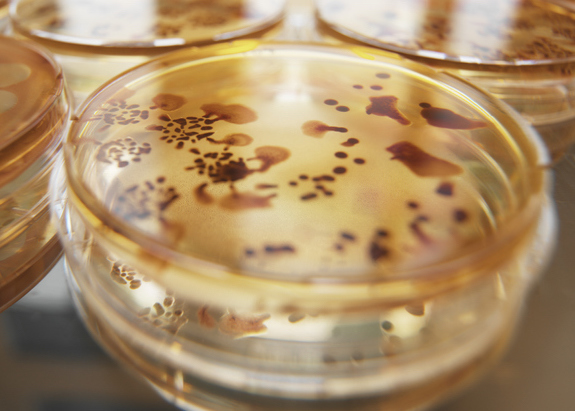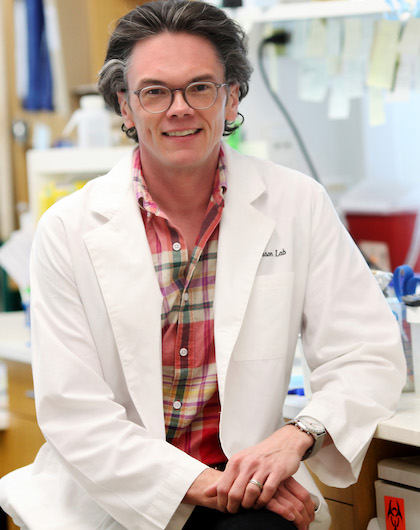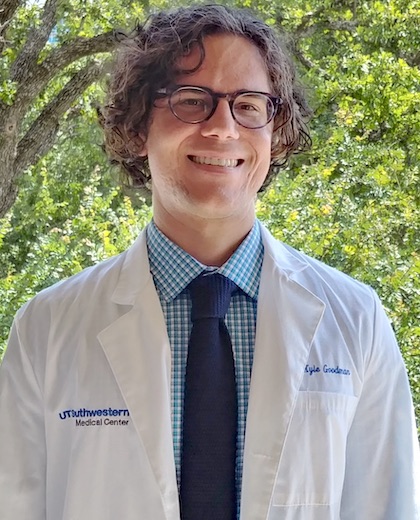When the BumR gives you diarrhea

DALLAS – May 11, 2020 – A study from UT Southwestern researchers sheds new light on how the bug that's the No. 1 cause of bacterial diarrhea finds its way through the human gut.

The findings could provide a therapeutic target as researchers look for ways to prevent diarrhea caused by Campylobacter jejuni bacteria, which often spread to humans from chickens and other animals through undercooked or mishandled meat, says David Hendrixson, Ph.D., professor of microbiology at UTSW and senior author of the study.
The report, to be published this week in Proceedings of the National Academy of Sciences, is believed to be the first to show that the bacteria C. jejuni makes its way to a place in the lower intestine for growth and infection by sensing butyrate, a beneficial fatty acid produced by the "good bacteria" in the large intestine as they digest the dietary fiber in foods like fruits and vegetables. Butyrate feeds the cells lining the colon and is important for proper immune response.
In what is also thought to be a first, the UT Southwestern researchers identified and described the system – known as a two-component signal transduction system (TCS) – used by C. jejuni to respond to butyrate and begin multiplying.
Once this system senses butyrate, it changes gene expression to allow the bacteria to begin colonizing that section of the intestines, the study reports. Without that, C. jejuni would likely pass through the body without causing a problem, according to the study.
The researchers found this C. jejuni TCS operates very differently from other bacteria. In most bacterial systems, the first component transfers a phosphate molecule to its partner once it senses a signal like butyrate to spur the partner into action – in this case altering gene expression to begin colonization, explains Hendrixson. But in C. jejuni’s two-partner system, christened BumSR, the first component (BumS) normally takes a phosphate from its partner (BumR) but stops doing that when it senses butyrate.
"That cessation is what spurs BumR to take action to change gene expression so C. jejuni begins colonizing the lower intestine, which is where C. jejuni likes to live," Hendrixson says. "This method has never been demonstrated before in these TCS systems, which are the most prevalent sensing systems in bacteria."

That finding will be important for other researchers to know as they investigate the bacteria, which can also be acquired by drinking contaminated water or unpasteurized milk, says Kyle Goodman, first author of the study. Goodman, a student in UTSW’s combined M.D./Ph.D. program, says he was initially confused when his test tube experiments failed to show the expected phosphate transfer from BumS.
While C. jejuni is less virulent than two better-known causes of diarrhea – E. coli and Salmonella – it is more common and can also be life-threatening, especially in young children, those over age 65, or people with compromised immune systems, Goodman says.
Bacteria in the Campylobacter genus cause an estimated 1.5 million illnesses each year in the U.S. and are a major risk factor for Guillain-Barré syndrome, a potentially crippling autoimmune disorder, according to the Centers for Disease Control and Prevention (CDC).
Researchers at the University of Georgia collaborated on this study. The new findings help explain results from their 2018 study showing that BumR is important for C. jejuni infection in humans.
The new study also looked at C. jejuni colonization in chickens, which often carry the bacteria in their lower intestines but do not suffer symptoms. The researchers found that young chicks given C. jejuni with irregular BumS and BumR showed less bacterial colonization, suggesting the same two-component signaling system is necessary for effective infection of chicks as well.
A 2015 government study found Campylobacter on 24 percent of raw chicken bought from retailers, according to the CDC.
The study was supported by grants from the National Institutes of Health and the National Science Foundation.
About UT Southwestern Medical Center
UT Southwestern, one of the premier academic medical centers in the nation, integrates pioneering biomedical research with exceptional clinical care and education. The institution’s faculty has received six Nobel Prizes, and includes 25 members of the National Academy of Sciences, 16 members of the National Academy of Medicine, and 14 Howard Hughes Medical Institute Investigators. The full-time faculty of more than 2,500 is responsible for groundbreaking medical advances and is committed to translating science-driven research quickly to new clinical treatments. UT Southwestern physicians provide care in about 80 specialties to more than 105,000 hospitalized patients, nearly 370,000 emergency room cases, and oversee approximately 3 million outpatient visits a year.
